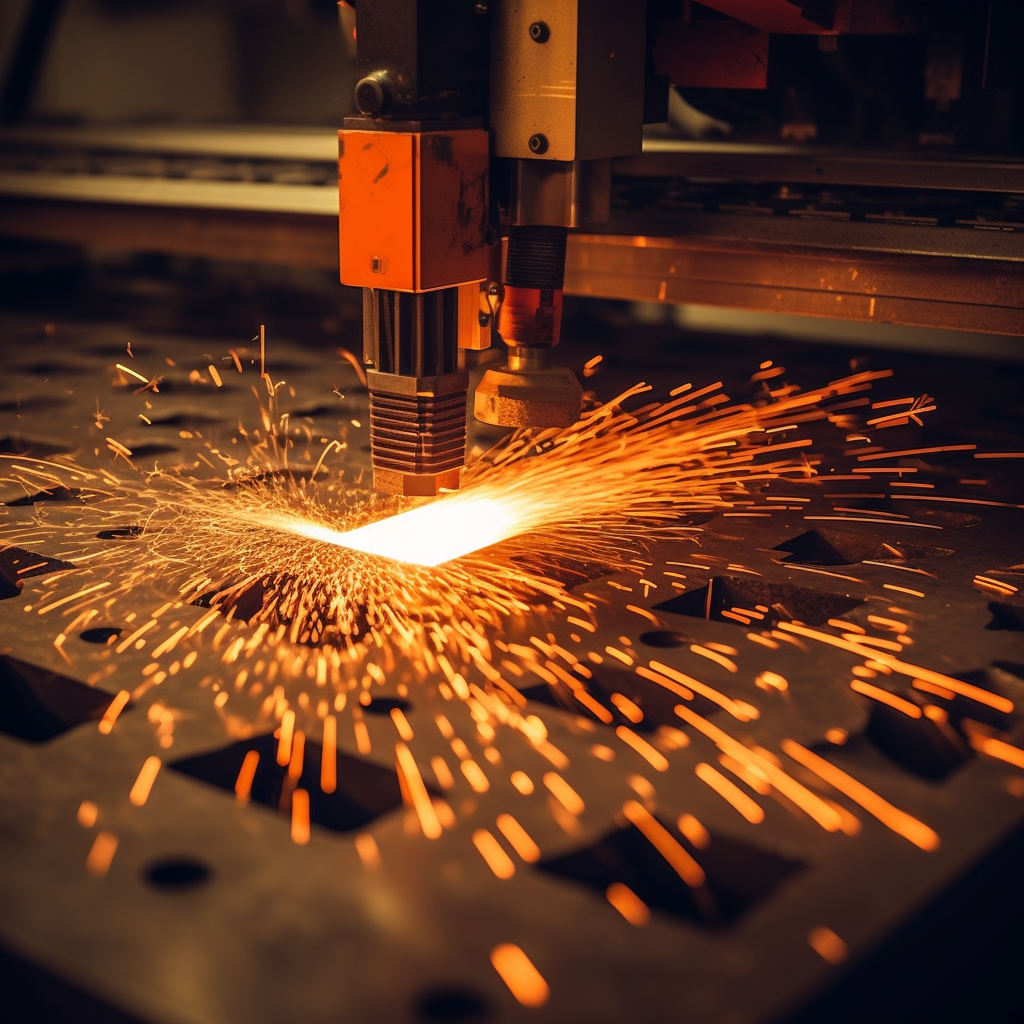Sustainability and Laser Cutting: A Greener Approach to Manufacturing
In today's world, sustainability has become a paramount concern across various industries. Manufacturing, in particular, has a significant impact on the environment due to its resource consumption, energy usage, and waste generation. However, advancements in technology have opened up avenues for greener approaches to manufacturing. One such method is laser cutting, which offers a range of benefits for both manufacturers and the environment. In this blog post, we will explore the concept of sustainability in manufacturing and how laser cutting, especially in metal fabrication, contributes to a greener approach.
Understanding Sustainability in Manufacturing
Sustainability in manufacturing refers to the practice of minimizing the environmental impact of production processes while ensuring economic viability and social responsibility. It involves making conscious choices to conserve resources, reduce waste, and decrease energy consumption. By adopting sustainable practices, manufacturers can contribute to a healthier planet and promote long-term economic growth.
The Advantages of Laser Cutting
Laser cutting is a precise and versatile manufacturing technique that uses a high-powered laser beam to cut through various materials, including metal, wood, plastic, and fabric. When it comes to metal fabrication, laser cutting offers several advantages that align with sustainability goals:
Reduced Material Waste
Metal laser cutting allows for intricate and precise cuts, minimizing material waste. The accuracy of the laser beam ensures that only the required sections are cut, optimizing the use of raw materials and reducing scrap.
Energy Efficiency
Laser cutting machines designed for metal fabrication are highly energy-efficient. They utilize computer-controlled systems that minimize energy consumption by operating only when necessary. Additionally, the laser beam itself requires minimal energy to cut through metal compared to other mechanical cutting methods.
Minimal Secondary Processes
The precision of laser cutting often eliminates the need for secondary processes, such as deburring or finishing, which would generate additional waste and energy consumption. This streamlining of production helps reduce the overall environmental impact in metal fabrication.
Versatility in Metal Fabrication
Laser cutting machines can cut a wide range of metals with minimal adjustments, reducing the need for separate manufacturing processes and specialized equipment. This versatility enhances efficiency, reduces resource consumption, and lowers production costs in the metal fabrication industry.
Environmental Impact Reduction in Metal Fabrication
Laser cutting plays a significant role in reducing the environmental impact of metal fabrication processes. By adopting this greener approach, manufacturers can achieve the following environmental benefits:
Waste Reduction
Metal laser cutting generates less waste compared to traditional cutting methods. The precision of the laser beam allows manufacturers to optimize material usage, reducing the amount of scrap generated during production. This reduction in waste contributes to lower landfill volumes and conserves natural resources.
Energy Conservation
Metal laser cutting machines are designed to be energy-efficient. The utilization of computer-controlled systems and the minimal energy requirement of the laser beam contribute to reduced energy consumption. This reduction in energy usage helps lower carbon emissions and mitigates the environmental impact associated with metal fabrication processes.
Improved Air Quality
Laser cutting for metal fabrication does not generate harmful fumes or particulate matter. The laser beam vaporizes or melts the metal being cut, eliminating the need for lubricants, coolants, or other chemicals that can release harmful pollutants into the atmosphere. This ensures a cleaner and safer working environment for employees in the metal fabrication industry.
Water Conservation
Metal laser cutting processes typically do not require water for cooling or lubrication, unlike some traditional cutting methods. This eliminates the need for water consumption and reduces the strain on water resources, making laser cutting an eco-friendly choice in metal fabrication.
Applications of Laser Cutting in Sustainable Metal Fabrication
Metal laser cutting is widely used in various industries and applications. Its sustainable attributes make it an ideal choice for metal fabrication processes in the following areas:
Construction and Architecture
Laser cut metal is commonly used in architectural designs, building facades, and interior decorations. The precise and intricate cuts achieved through laser cutting allow for unique and sustainable metal structures.
Automotive and Aerospace
Laser cutting is widely employed in the manufacturing of automotive and aerospace components, including body panels, chassis parts, and intricate engine parts. The precision and versatility of laser cutting enable efficient material utilization and contribute to the overall sustainability of these industries.
Renewable Energy
Metal laser cutting is crucial for the production of renewable energy components, such as wind turbine parts and solar panels. The accuracy and efficiency of laser cutting ensure optimal performance and durability in renewable energy systems.
Metal Art and Design
Laser cut metal has gained popularity in the art and design world. It allows artists and designers to create intricate patterns, sculptures, and decorative pieces while minimizing material waste.
Sustainability in manufacturing is a critical aspect of reducing the environmental impact of production processes. Laser cutting, particularly in metal fabrication, provides a greener approach by minimizing material waste, conserving energy, reducing the need for secondary processes, and improving air quality. With its versatility and wide range of applications in construction, automotive, renewable energy, and metal art, laser cutting plays a vital role in promoting sustainable practices. By embracing laser cutting and other eco-friendly manufacturing techniques, we can create a more sustainable and greener future for generations to come.

